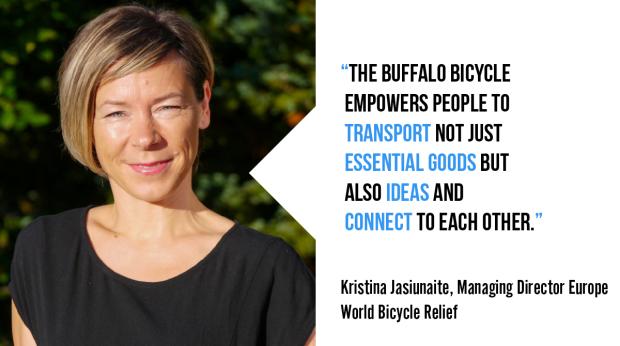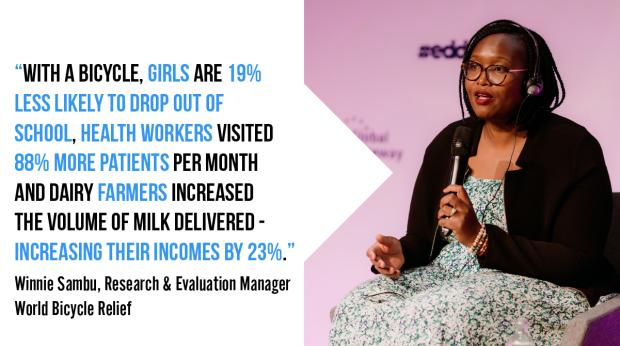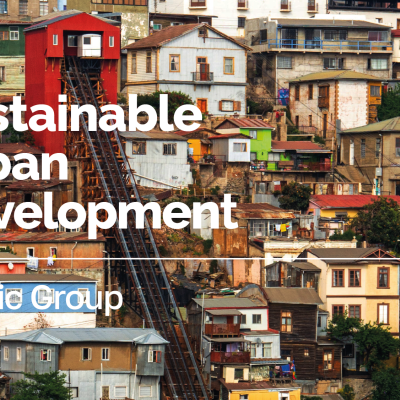This article is also available in French and Spanish.
All over the world, Capacity4dev community members are strengthening connections between Europe and partner countries, developing effective solutions for universal mobility. As a platform promoting innovation, Capacity4dev has interviewed the team that stands behind the Buffalo Bicycle, one of the fastest growing programmes showcased during the 2022 Global Gateway-themed European Development Days and implemented by the German development agency (GIZ).
Towards Efficient and Inclusive Transport
Transporting people and goods around the world is now cheaper, faster and more efficient than ever before. Journeys that used to last months or weeks can now be completed within a day. A larger volume of goods can now be shipped from one end of the world to the other, significantly boosting international trade. Improved transportation has unquestionably connected millions of people to better health care, education and economic opportunities. This has helped the world to witness the largest reduction of poverty in human history.
According to the World Bank Sustainable Mobility for All initiative, Annual passenger traffic is expected to increase by 50% by 2030, global freight volumes by 70%, and an additional 1.2 billion cars are expected to be on the road by 2050. With the global population projected to reach 9.7 billion by 2050 - with half joining the middle-class - mobility expectations are changing radically.
So far, it is estimated that about one billion people still depend on their own feet for transportation due to unaffordable costs or no direct access to roads. Mobility continues to singularly discriminate non-urban communities where hundreds of millions struggle to access affordable transportation solutions. With one in eight inhabitants worldwide experiencing poverty living in a rural area, there is certainly further scope to continue the remarkable progress achieved to date.
As the world’s leading development institution, the EU champions initiatives that address the mobility factor, an essential component in any successful development project, and one for which the EU has provided adaptable strategies for diverse contexts.
To date, 44 cities from EU and non-EU countries have formed a thematic network on urban and regional social cohesion, with a core focus on accelerating mobility and transport with the support of the International Urban and Regional Cooperation Programme (IURC) for 2021-2024.
Through the new European Urban Mobility Framework adopted in 2021, the EU is committed to sustaining international cooperation in the areas of social and equal inclusiveness (chapter 4 points 75 to 79).
Rural Mobility - The Missing Link to Achieving the SDGs
In the search for global transportation solutions, rural mobility is often overlooked. Yet people’s lives and choices are intrinsically tied to their ability to move around, and those who are prevented from contributing to the global economy cannot realise their full potential. In order to Leave No One Behind, the significant advancement collectively achieved in developing urban environments calls to be replicated in rural regions.
To this end, embedding rural transportation into the SDGs requires going beyond building roads or providing large passenger-carrying vehicles. What makes a difference are system-level creative solutions that provide equal mass transportation for low-density areas.
Bitesize mobility tips from the Buffalo Bicycle programme:
1. Get community buy-in
2. Keep the solution simple
3. Harness the data

Ensuring community engagement is a proven winning strategy. It is critical to work with communities to understand their mobility and transportation needs as well as for the community to feel that they have ownership of a project – that they have a say in how the mobility solution is implemented in their midst. Without the buy-in of the different stakeholders within that community, a project might not be as impactful as desired; a risk that can be easily neutralised at inception level. Hence, the significance of community-centred, human-centred approaches in the design and implementation of programmes from end-to-end to guarantee success.

Introducing a technologically complex solution in areas where there is no infrastructure, where the mobility solution cannot be supported, is simply not sustainable. Such solutions are not fit for purpose and, thus, have the highest chance of failing and sinking the best-funded programmes. Instead, the focus should be on finding better, simpler solutions that can work over time and that can include as many people as possible. In many cases, a simple intervention such as introducing a bicycle as a development tool can benefit many people. An inseparable by-product of simplicity, maintenance is vital to the sustainability of a project: if one spare part – one repair kit – is missing, or the knowledge to repair it, a big machine will be standing still for half a year or longer. The desired impact would be watered down and slowly disappear. Hence, enabling community members to run the day-to-day programme implementation at grassroots level is an efficient preventive measure. World Bicycle Relief, for example, trains bicycle supervisory committees in charge of bicycle mechanics who repair and service the bicycles on-demand. "We have developed the Buffalo Bicycle, a rugged, sturdy bicycle that can carry 100 kilogrammes on the carrier plus the rider and also essential goods. Our bicycle is simple to repair but also compatible with local available spare parts". Kristina Jasiunaite, Managing Director Europe, World Bicycle Relief.
The most impactful initiatives use research data to provide evidence in designing programmes and interventions that improve people's lives. A lack of data can be a major hinderance that impacts the overall programme implementation. That is why compiling research activities to understand the communities, their needs and how transport can enhance the outcome of a project is a fundamental aspect in every step. For this to happen, one needs to examine all issues in detail and first ask the right questions: What are the needs of the communities from a transportation and mobility perspective? What are the key issues that affect them? How to implement the programme? How to measure its impact? Consistently conducting research and monitoring the usage of the means of transport implemented in the communities is an ongoing requirement in understanding how to improve service delivery.

"Our research has found that girl students with a bicycle are 19% less likely to drop out of school ; health workers visited 88% more patients per month; and dairy farmers increased the volume of milk delivered - increasing their incomes by 23%". Winnie Sambu, Research and Evaluation Manager, World Bicycle Relief.
Never was the need to design solutions so people can not only travel from A to B, but also transport whatever they need to transport more acutely appreciated than in our increasingly connected societies where the demand for transportation is skyrocketing.
Strategic Sustainable Mobility For All
Whether in Africa, Asia, Europe or Latin America, identifying the right partnerships for a cross-sectoral approach that brings together civil society, government and the private sector - offers a way forward for reliable, affordable, accessible and sustainable transport solutions for all.
The EU’s Urban Mobility Support Programme’s (UMSP) concept and guidelines have set a global standard in the field of strategic mobility governance at city level, a model rapidly adopted by different geographies worldwide.
The UMSP supports, for instance, the various investment activities needed for the roll-out of the MobiliseYourCity partnership in selected cities, geographically balanced across the African, Caribbean and the Pacific (ACP) regions.
By focusing on the elaboration of sustainable low-carbon urban mobility policies and strategies, Sustainable Urban Mobility Plans (SUMPs) encourage activities geared towards the development and implementation of capacity enhancement of local actors.
To build on the ambitions of the European Climate Neutral and Smart Cities mission and achieve Sustainable Development Goal n°11, mobility for all is to take centre stage - and rural mobility is just a thought away.
Do you have a story that you would like to share with the Capacity4dev community? Send us your idea.
Additional Resources
- Watch the #EDD22 Session Achieving the SDGs by Bike: How Two Wheels Accelerate Development Outcomes.
- MobiliseYourCity is an international partnership initiated by the French and German governments and was launched at COP21, Paris 2015. It supports national and local governments in developing countries in the planning of sustainable urban mobility to develop more inclusive, liveable and economically efficient cities and to reduce Greenhouse gas (GHG) emissions. Today,the Partnership has 14 partner countries and more than 60 partner cities with a combined population of over 75 million people in 32 countries.
- The Mission Innovation (MI) on Urban Transitions is another EU-sponsored global collaborative, transparent and creative initiative focused on strengthening cooperation worldwide.
- The Global Tracking Framework for Transport (GTF)is the first-ever global repository of transport data and indicators. It consists of more than 100 desirable and actual transport-related indicators to measure the performance of countries’ transport systems, covering all modes of transportation (road, air, maritime, and rail).
- The Commission's Quick Tips guide on Green Mobility provides practical examples of how to reduce greenhouse gas emissions and pollution from the transport sector, how to use green instruments with proven effectiveness and how to promote resilience to climate change. This guide also assists with the design of mobility programmes that contribute to international environment and climate commitments, as well as ensuring that environment and climate change are effectively integrated in budget support to the transport sector and in investments related to urban mobility.





Log in with your EU Login account to post or comment on the platform.